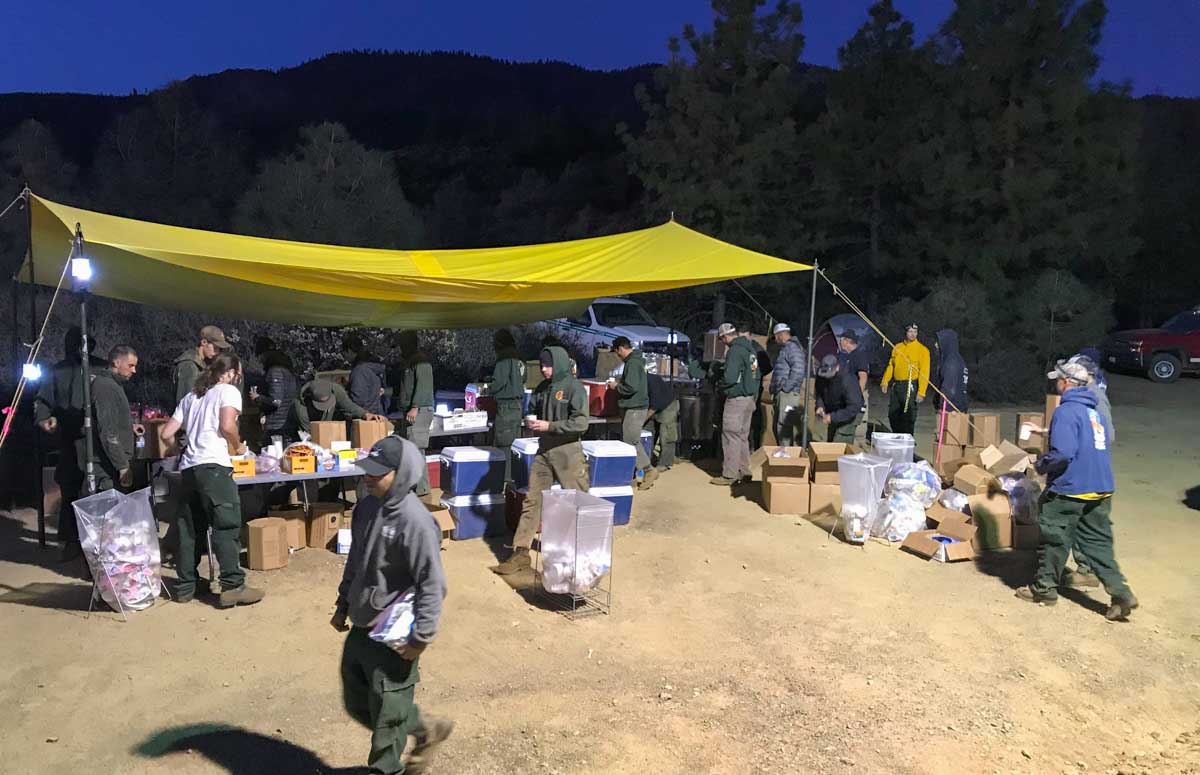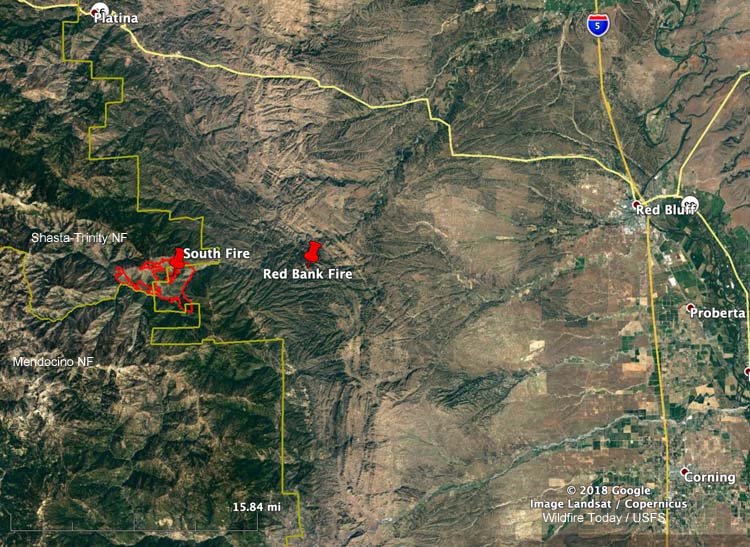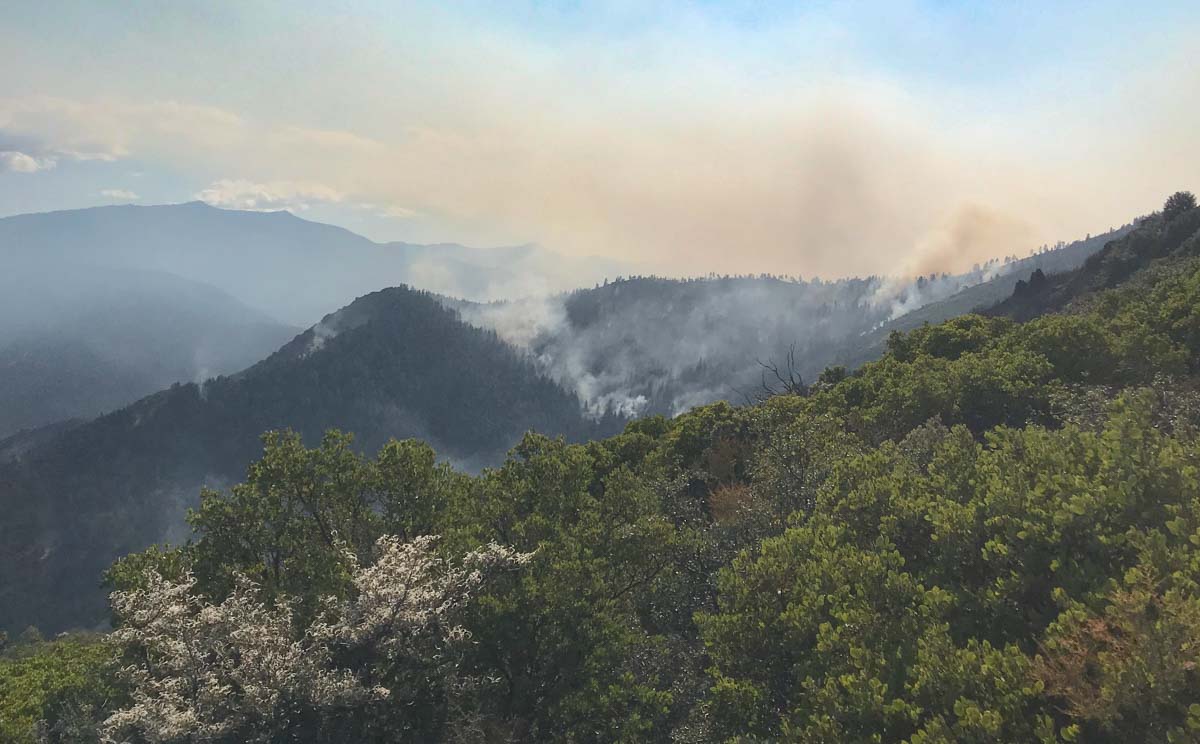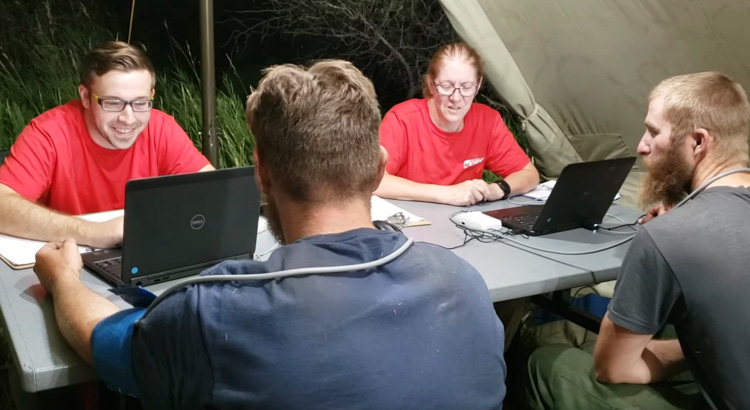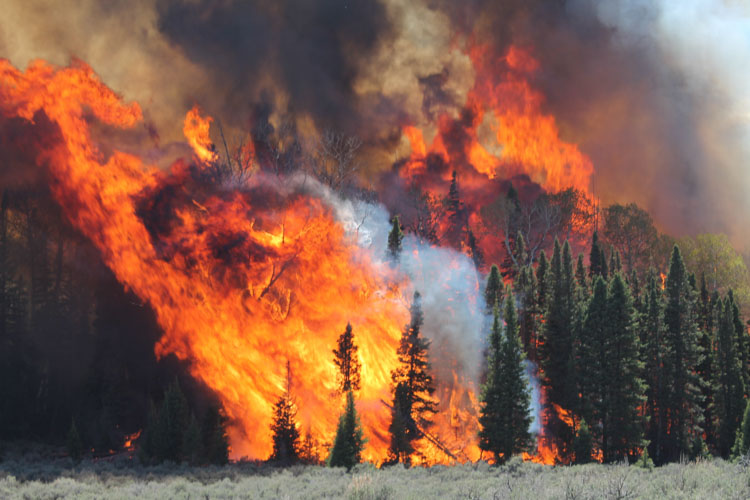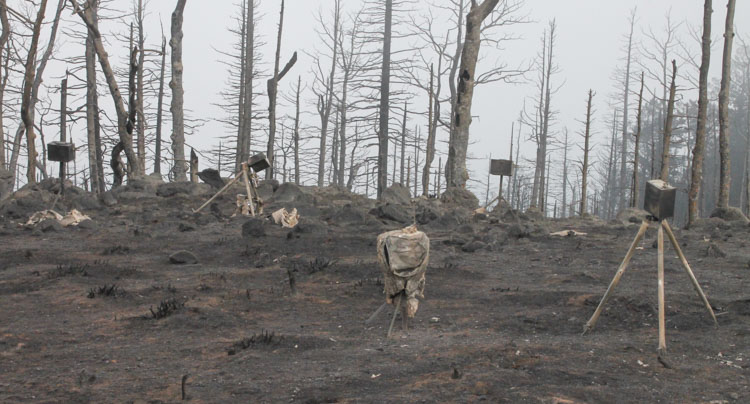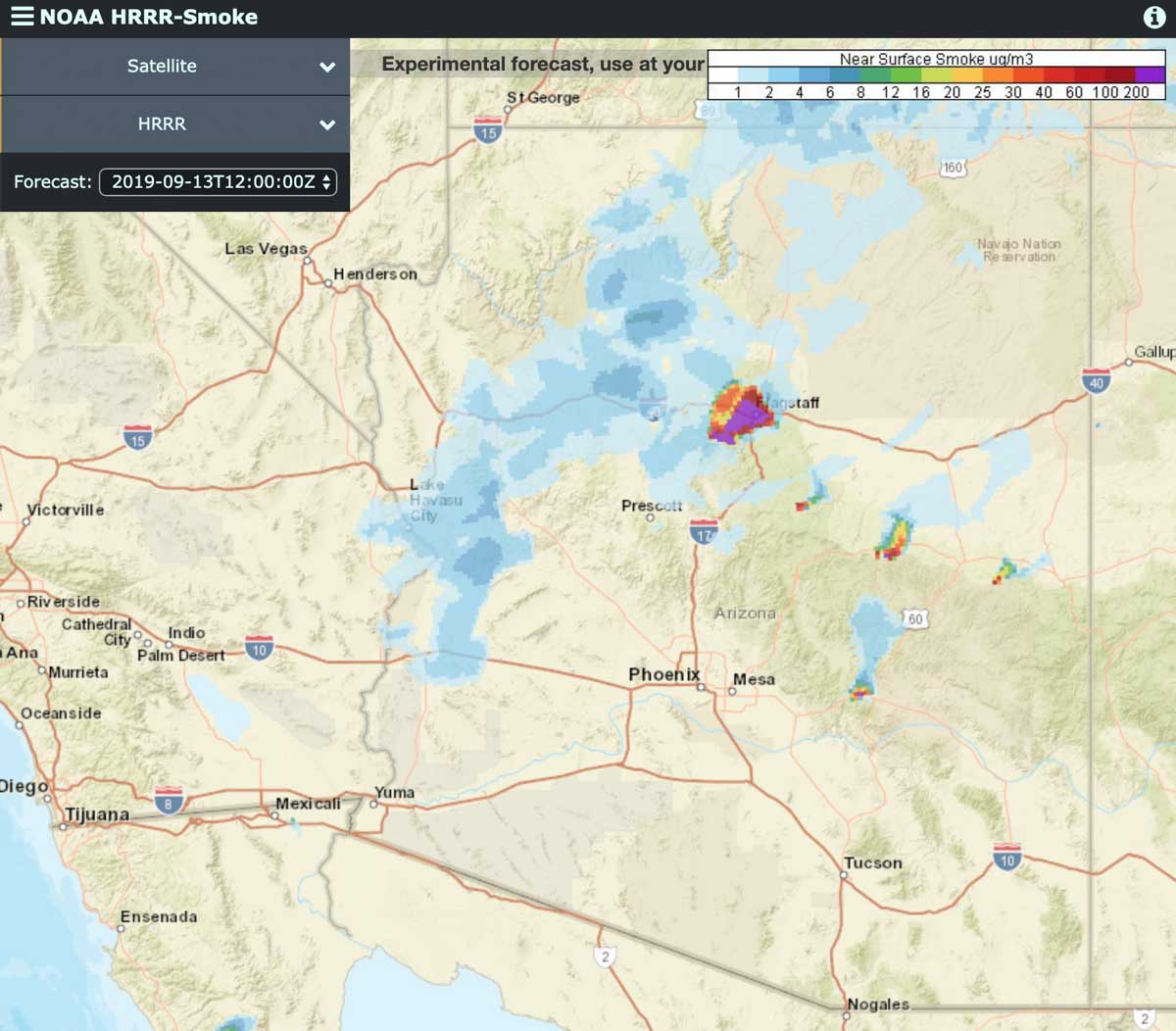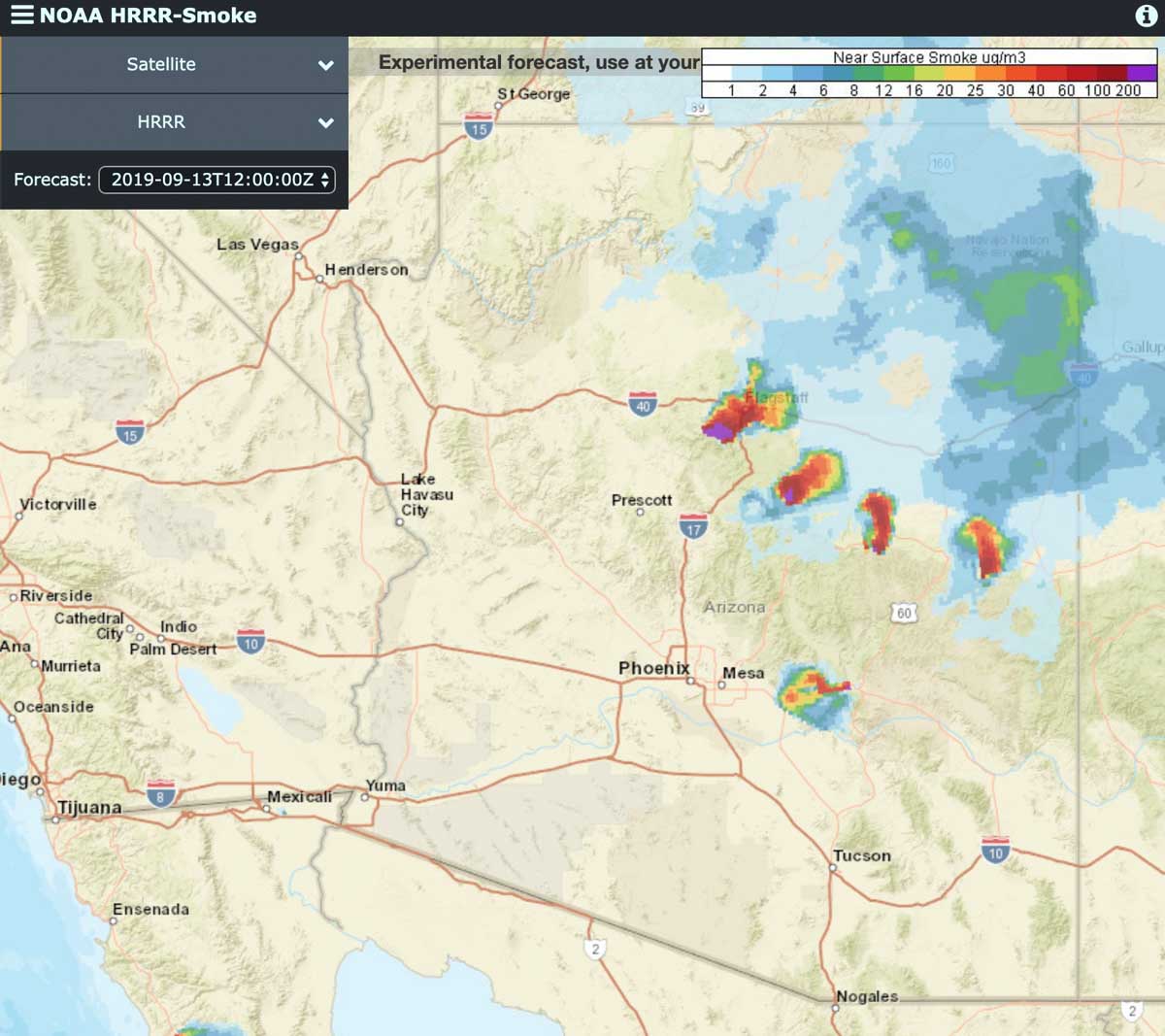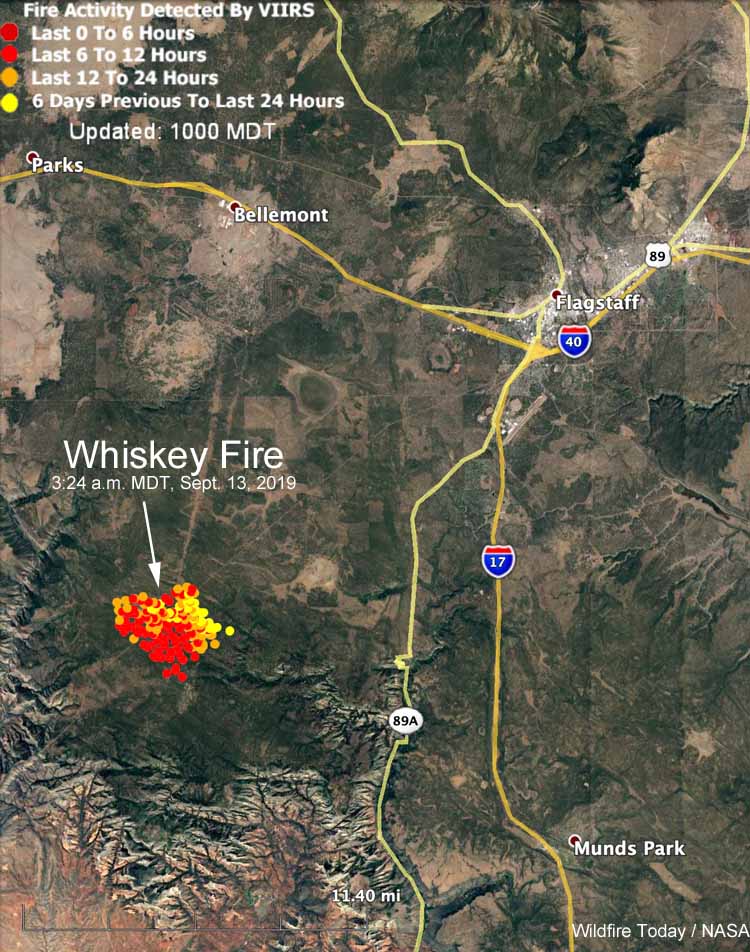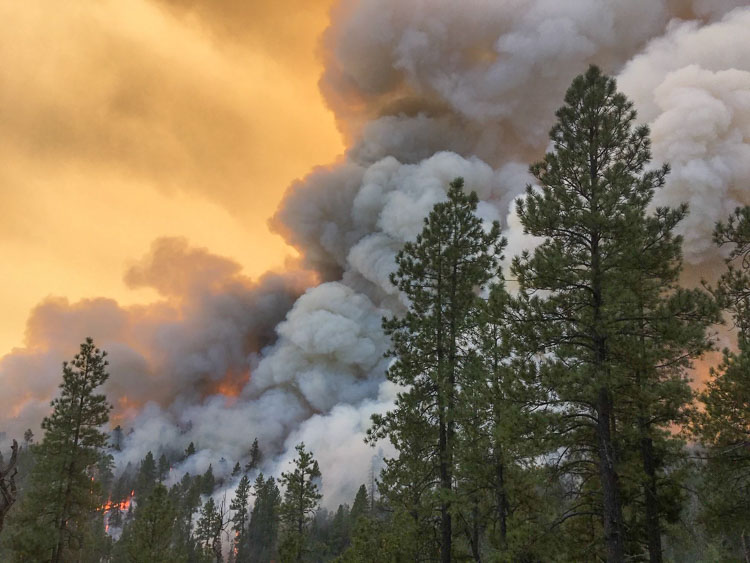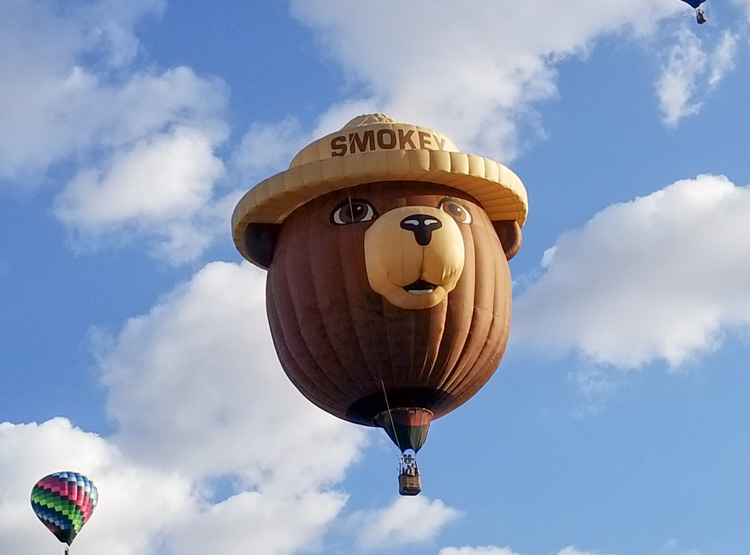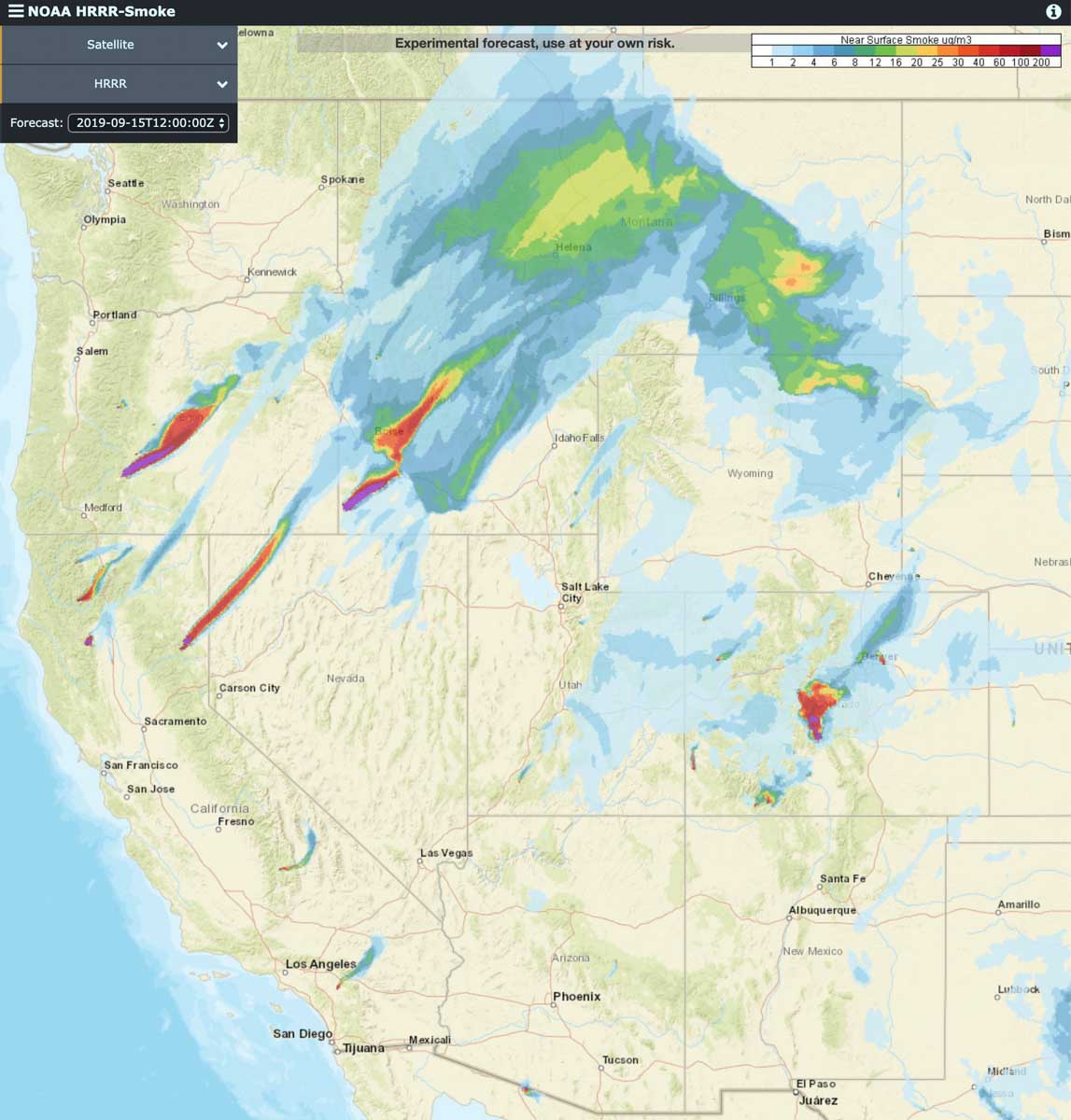
Smoke from wildfires are producing smoke that forecasters expect to affect large portions of Idaho, Montana, and Colorado on Sunday. The map above is the forecast for 6 p.m. MDT.
The largest producers of smoke today are:
- Oregon: the 13,000-acre, largest ever prescribed fire on the Fremont-Winema National Forest just east of Crater Lake National Park, south of Highway 138 and west of Highway 97.
- Idaho: a wildfire in state-protected lands in the southwest corner of the state 77 miles southwest of Boise, ID and 32 miles south-southeast of Jordan Valley, OR.
- California: The 53,148-acre Walker Fire 16 miles south of Susanville, CA.
- Colorado: Decker Fire, 6 miles south of Salida, CO, a fire 36 miles southwest of Salida, and two fires 20 and 40 miles east of Durango.
Red Flag Warnings are in effect Sunday for areas of California, Nevada, Oregon, and Wyoming.
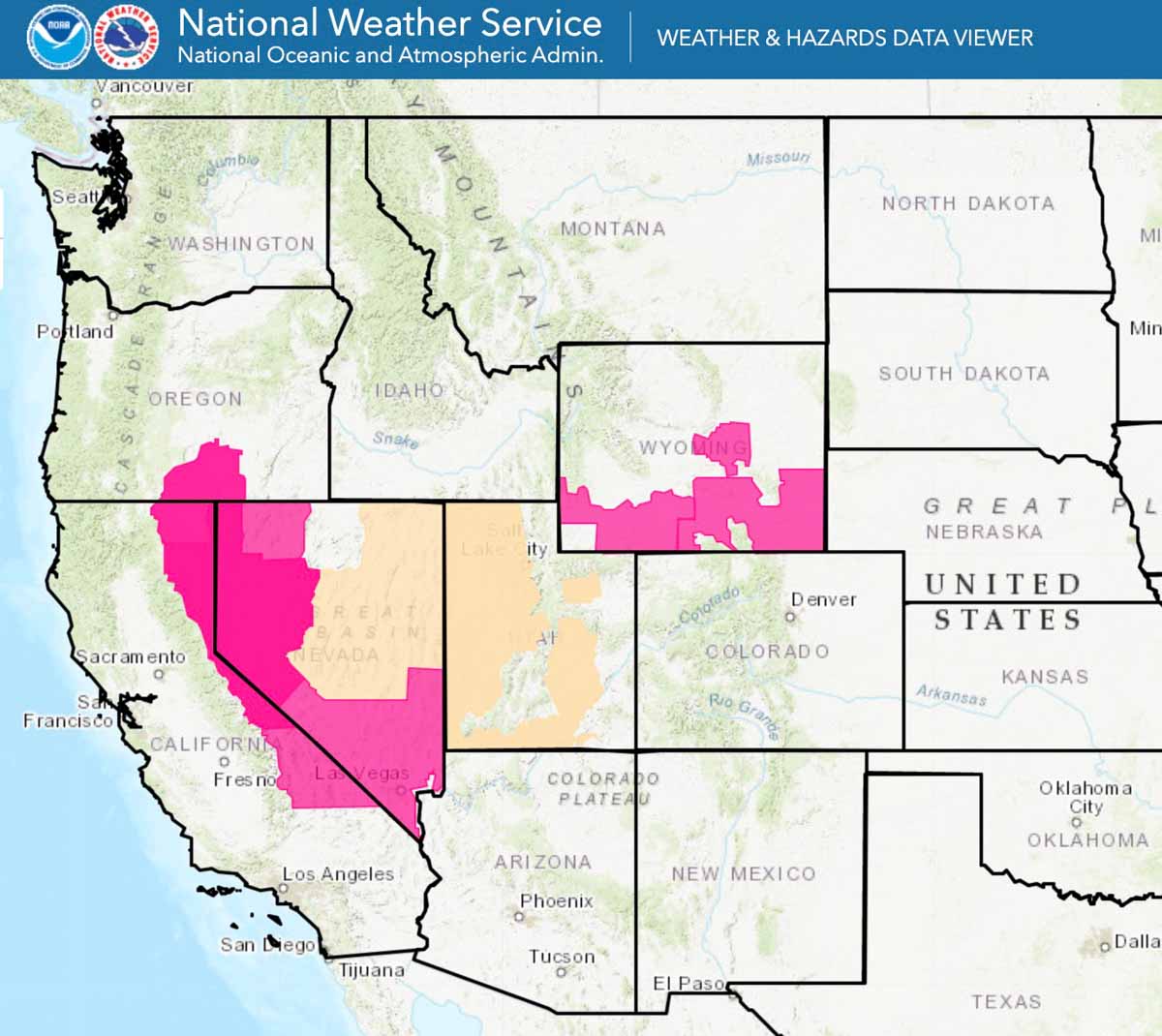
(Red Flag Warnings can be modified throughout the day as NWS offices around the country update and revise their weather forecasts.)

